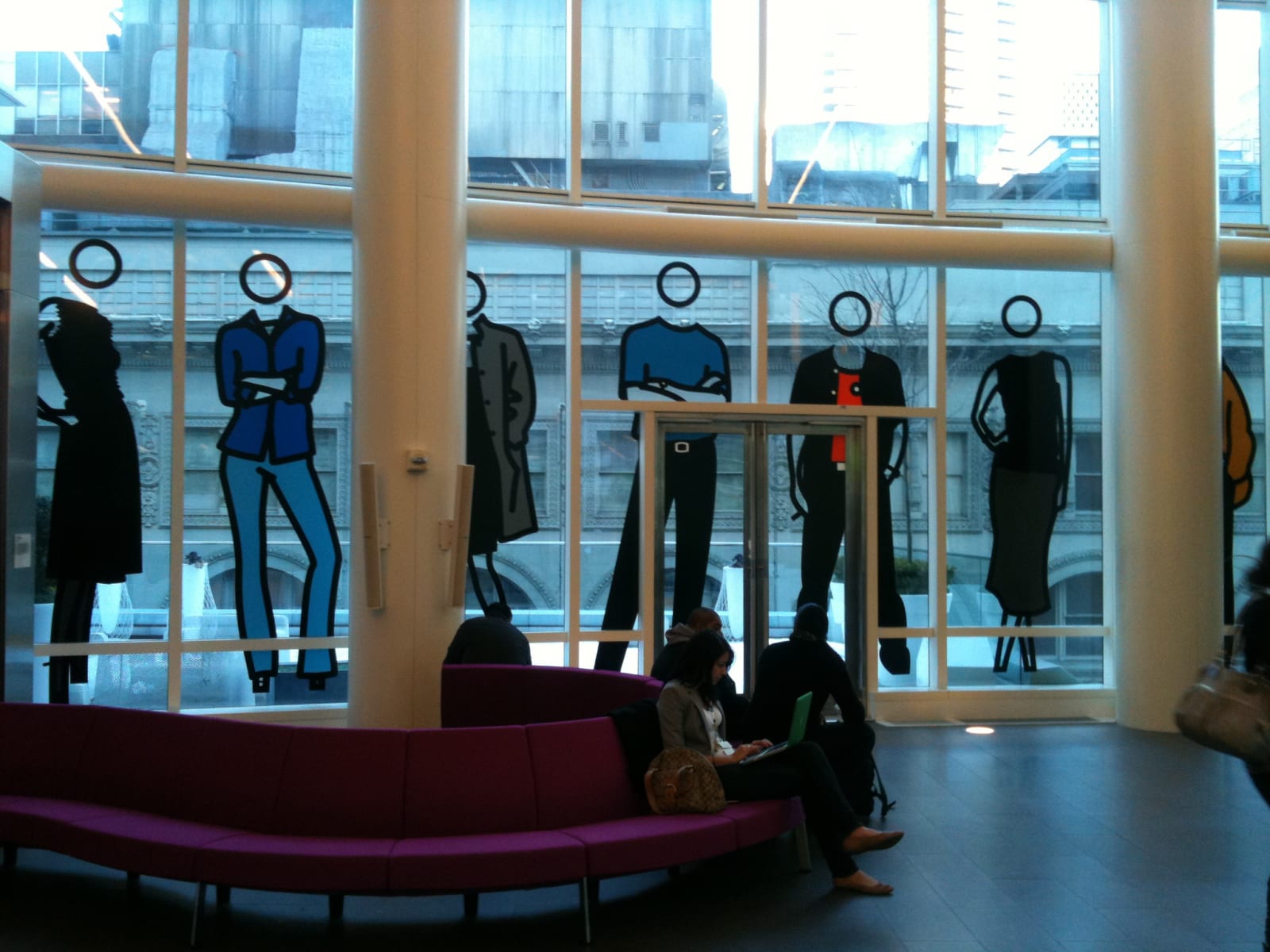Humans running at full pelt is an affecting sight. It reminds me of homo erectus chasing down an antelope.
– Julian Opie
The minimalist works of Julian Opie (b.1958) have universal appeal. Just this summer his works are on exhibit at the Guangdong Museum of Art and the UCCA Lab in China, are part of London Sculpture Week, are on display at the Black Box in Munich, the Museum of Contemporary Art in Krakow, the Museum of Contemporary Art in Spain, on the Paris Metro and at the Piazza del Quadrilatero in Milan.
Born in London and raised in Oxford, Opie has become one of the most popular artists in British and world culture. “My mum taught me how to look.” he said in a recent interview in The Guardian. “My father taught me perseverance, to keep hammering away, to not ever give up. To misquote Shakespeare, I’m not naturally intelligent, but I sometimes am by chance”.
Though his designs are simple, through his use of technology, his respect for art history and his keen observations of the human form, he has created a body of work that is part of the permanent collections of the National Portrait Gallery in London, the Tate, the Victoria and Albert Museum, MoMA, the Israel Museum in Jerusalem and Takamatsu City Museum of Art in Japan and other fine venues around the world.
I considered any art pointless if it did not put itself at the disposal of political struggle…my art was to be a gun and a sword.
– George Grosz
The works of George Grosz (1893-1959) have recently been included at exhibits at the National Gallery of Art in D.C. and at the Heckscher Museum of Art in Huntington, New York, where the artist lived and worked from 1947 until shortly before his death in 1959.
Grosz was born in Berlin. He began studying at the Dresden Academy of Fine Arts when he was just sixteen. After a stint in the German army at the start of World War l, Grosz focused his artwork on the horrors of war and what he viewed as the decay of German society.
His works were considered ‘blasphemous’ by the German government and were included in the Nazis' Entartete Kunst (Degenerate Art) exhibition of 1937 in Berlin. More than 200 of Grozs' drawings were exhibited by the Nazis and later destroyed.
Grosz, his wife and two sons emigrated to the United States in 1933. He became a U.S. citizen in 1938. He taught at the Art Students League (his student included Louise Nevelson and Jackson Pollock) and contributed illustrations to magazines such as the New Yorker, Vanity Fair, and Esquire.
George Grosz’ legacy is a body of work whose social commentary is still relevant today.
References:
Michael Hogan. Julian Opie: I’ve got a detailed plan or my death. The Guardian/Interview. September 14, 2024.
Len Gordon. Julian Opie: I play with What I See in Nature and Culture. Art Plugged. July 15, 2024. Natasha Gural. A Small Museum with a Mighty Vision: The Heckscher Transforms Art History with George Grosz ‘Stickmen Exhibition. June 26, 2024.





